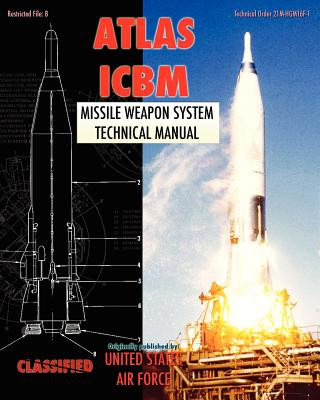
Kod: 08886399
Atlas ICBM Missile Weapon System Technical Manual
Autor United States Air Force
The first ICBM to be developed and deployed by the United States, the Atlas had a range of 5500 nautical miles and could achieve a speed of 15,500 mph. Depending on configuration, it could be equipped with either a W-49 (1.45 mega ... więcej
- Język:
 Angielski
Angielski - Oprawa: Miękka
- Liczba stron: 592
Wydawca: Periscope Film LLC, 2011
- Więcej informacji o książce

205.39 zł
Zwykle: 216.20 zł
Oszczędzasz 10.81 zł

Dostępna u dostawcy
Wysyłamy za 14 - 18 dni
Zobacz książki o podobnej tematyce
-

Plant-Based Air Fryer Cookbook: 75 Whole-Food Vegan Recipes
76.01 zł -12 % -

Titan II
282.21 zł -

Convair B-36 Peacemaker
116.18 zł -23 % -

Spymaster
109.94 zł -

Able Archer 83
133.70 zł -4 % -
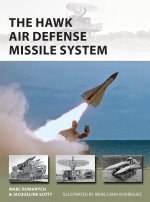
HAWK Air Defense Missile System
56.48 zł -23 % -
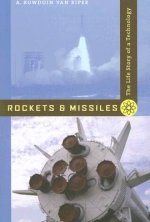
Rockets and Missiles
149.61 zł -

Russian/Soviet Aircraft Carrier & Carrier-borne Aviation Design & Evolution, Volume 2: Aircraft Carrying Heavy Cruisers ? Project 1143.5/6 Kuznetsov C
140.85 zł -

Visual Alchemy: The Fine Art of Digital Montage
148.10 zł -23 % -

Strategic Intelligence Management
320.37 zł -

Precision Molecular Pathology of Breast Cancer
528.49 zł -
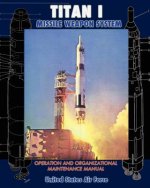
Titan I Missile Weapon System Operation and Organizational Maintenance Manual
205.19 zł -5 % -

Ballistic Missile Defense Technologies
181.53 zł -
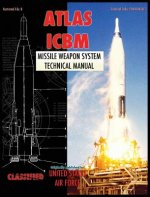
Atlas ICBM Missile Weapon System Technical Manual
245.36 zł -4 %
Bon podarunkowy: Radość gwarantowana
- Podaruj bon o dowolnej wartości, a my się zajmiemy resztą.
- Bon podarunkowy dotyczy całej naszej oferty.
- Możesz wydrukować elektroniczny bon z e-maila a następnie przekazać go obdarowanemu.
- Ważność bonu wynosi 12 miesięcy od daty wystawienia.
Więcej informacji o Atlas ICBM Missile Weapon System Technical Manual
Za ten zakup dostaniesz 120 punkty
 Opis
Opis
The first ICBM to be developed and deployed by the United States, the Atlas had a range of 5500 nautical miles and could achieve a speed of 15,500 mph. Depending on configuration, it could be equipped with either a W-49 (1.45 megaton) or W-38 (4.5 megaton) thermonuclear warhead. The Atlas' development can be traced to a series of research and development studies performed in the wake of WWII by the Convair company. These led to the company winning a contract in 1951 for a long range missile. The three-engine XSM-65A design that eventually emerged featured a thin skin, inflated by internal fuel pressure like a balloon, and had "one and a half" stages. In this configuration, both the main booster and sustainer engines ignited at lift-off, with the boosters dropped in flight. (This unique feature was intended to make certain the sustainer engine could fire at high altitudes, something later determined to not be a problem). The missile burned kerosene and liquid oxygen fuel, and relied on a radio-command / inertial guidance system. After some teething problems including the loss of the prototype Atlas, the missile flew successfully on December 17, 1957. A little under two years later, the first USAF Atlas ICBM squadron consisting of three missiles on unprotected pads was activated at Vandenburg AFB. Subsequent deployments featured hardened "coffins" in which the missile would be stored horizontally. After a launch order was issued, the Atlas would be raised, fueled, and launched - a hazardous process that took about fifteen minutes. The system's inherent vulnerability and long reaction time eventually led the Air Force to construct silos similar to those used with the Titan I, which lowered the response time considerably. The use of volatile fuel mixtures in the confined silo environment proved to be extremely dangerous however, and led to four catastrophic accidents. As second generation missiles came on the scene such as the Titan II and Minuteman, Atlas became obsolete. By April 1965, all Atlas ICBMs were phased out. At the peak 129 of the missiles were deployed, and nearly 350 were built during the program. Many of these would be recycled as launch vehicles for satellites. Notably, members of the Atlas family placed four of America's Mercury astronauts in orbit. Created by the Air Force for the men who stood "on alert" with the Atlas, this technical manual contains descriptions of the HGM-16F missile, launch complex, handling and transport, checkout and launch operations, emergency procedures, and more. Originally restricted, it has been declassified and is reprinted here in book form. Some portions have been reformatted, but care has been taken to preserve the integrity of the text.
 Szczegóły książki
Szczegóły książki
Kategoria Książki po angielsku Humanities History Military history
205.39 zł
- Pełny tytuł: Atlas ICBM Missile Weapon System Technical Manual
- Autor: United States Air Force
- Język:
 Angielski
Angielski - Oprawa: Miękka
- Liczba stron: 592
- EAN: 9781937684907
- ISBN: 9781937684907
- ID: 08886399
- Wydawca: Periscope Film LLC
- Waga: 1157 g
- Wymiary: 254 × 203 × 30 mm
- Data wydania: 20. December 2011
Ulubione w innej kategorii
-

With the Old Breed
45.60 zł -5 % -

SS Dirlewanger Brigade
73.29 zł -6 % -

Mediterranean Air War, 1940-1945
230.76 zł -23 % -

Wars of the Roses
81.65 zł -5 % -

SAS in Occupied France
116.18 zł -23 % -

Armies of Europe Illustrated
122.83 zł -
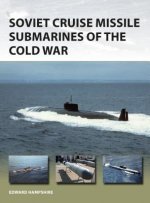
Soviet Cruise Missile Submarines of the Cold War
85.57 zł -5 % -

Black Prince And The Sea Devils
178.41 zł -

Truth About The Wunderwaffe
217.77 zł -

Kill Anything That Moves
93.53 zł -5 % -

Helmet for my Pillow
61.11 zł -23 % -

Forgotten Highlander
61.11 zł -23 % -

TM 9-803 Willys-Overland MB and Ford Model GPW Jeep Technical Manual
93.33 zł -5 % -

With the Old Breed
70.37 zł -23 % -

Sleepwalkers
87.89 zł -14 % -

Panzerkampfwagen Tiger Ausf.B
106.21 zł -13 % -

D-Day
47.31 zł -23 % -

War that Ended Peace
47.01 zł -14 % -

Second World War
136.22 zł -9 % -

Band Of Brothers
43.39 zł -15 % -

American Sniper
51.84 zł -23 % -

Battles Map by Map
137.43 zł -14 % -

Brothers in Battle, Best of Friends
77.52 zł -5 % -

Eastern Approaches
61.11 zł -23 % -

Citizen Soldiers
61.11 zł -23 % -

Fate is the Hunter
51.84 zł -23 % -

Shattered Sword
151.52 zł -6 % -

Panzerjager on the Battlefield
120.61 zł -23 % -

Fairbairn-Sykes Commando Dagger
74.80 zł -23 % -

Templars
56.48 zł -23 % -

Bravo Two Zero
52.35 zł -15 % -

Us Forces in Vietnam 1968 - 1975
101.58 zł -4 % -

Military History Book
138.94 zł -23 % -

Lost Victories
102.29 zł -23 % -

The Second World War
78.93 zł -14 % -

Hirohito and the Making of Modern Japan
70.37 zł -23 % -

T-34 on the Battlefield. Volume 2
178.91 zł -6 % -

Reaper
79.63 zł -12 % -

RAF Battle of Britain Fighter Pilots' Kitbag
79.43 zł -23 % -

Art of War
52.35 zł -15 % -

Pacific Crucible
105.71 zł -4 % -

Soldaten - On Fighting, Killing and Dying
47.31 zł -23 % -

1914-1918
88.69 zł -23 % -

SS Charlemagne
61.11 zł -23 % -

Between Giants
96.45 zł -11 % -

German Panzers 1914-18
67.55 zł -15 % -

War Like No Other
81.44 zł -11 % -

Hommes et ouvrages de la ligne Maginot, Tome 4
221.20 zł -

Winter Uniforms of the German Army
359.64 zł -4 %
zadowolonych klientów
Od roku 2008 obsłużyliśmy wielu miłośników książek, ale dla nas każdy był tym wyjątkowym.
Copyright! ©2008-24 libristo.pl Wszelkie prawa zastrzeżonePrywatnieCookies


 21 milionów książek
21 milionów książek Dostawa 10.99 zł
Dostawa 10.99 zł (32) 444 93 66 (8-15.30h)
(32) 444 93 66 (8-15.30h)